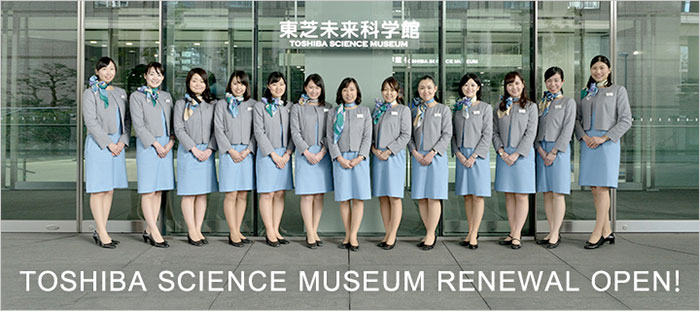Double Circle, an anime collaboration between electronics giant and household name Toshiba and the city of Kawasaki in the Kanagawa Prefecture, Japan can boast a following large enough to accumulate some 41,565 Facebook Likes. Now, Toshiba has used 3D printing to create full colour figurines of the anime’s vibrant main characters, which represent various forms of smart power: solar, wind, water, biomass and more. The figurines are significant enough to currently be on display at the Toshiba Science Museum in Kawasaki.
Double Circle is an original web anime by Toshiba that has the theme of the smart community in Kawasaki. It is the lively story of some not-so-average people living in Kawasaki, which incorporates the concepts of energy, environment and economics using Information and Communication Technologies while using a superhero narrative. For our Japanese readers who are new to Double Circle, you can find the first YouTube episode of the series here. For intrigued English speaking readers, the first episode with subtitles can be found here.
The main character, Asagi, voiced by the award winning Nobuhiko Okamoto, is an employee of Kawasaki City’s Smart Community Promotion Sector, and Asagi’s post-transformation hero character representing Water Power. Akane, voiced by Asami Seto, is an engineer who works at the Smart Community Center whose hero character represents Wind Power. EMU is an intriguing man who lives in a boathouse. EMU’s post-transformation hero character represents ‘Green Power.’ The character is voiced by Daisuke Namikawa,. Nanoha, Chiwa Saito, is a genius IT boy with a hero character representing Solar Power. Tama-chan, also known as the somewhat tongue twisting Azuma-no-shibanu-tamamushi-hime, is a girl from outer space who landed in Kawasaki City with a secret mission…
At the start of the process the colourful cartoon characters were modelled in an undisclosed Computer Aided Design program with great skill by illustrator Ichijinsha of Kinako, relatively famed for Gatchaman Crowds. The CAD files were then converted into a data format used to print the figurines in the 3D printer. You are going to have to watch the following video closely to observe the colour process. Do not consume an energy drink or a double espresso before watching, you’ll probably start to hallucinate from the tempo of the Mario & Luigi at a rave dance music and visuals changing at a speed that should come with a health warning for those with pacemakers…
Inside the 3D printer a thin profile image of each of the characters is 3D printed in gypsum plaster powder (calcium sulphate), with full colouring ink, in a process which is repeated multiple times as layers are added according to the digital strata until the complete version of each character is formed. The figurines are then removed from the plaster powder and any extra powder is subtly removed by airbrushing.
Next, a non-stick glue coating is poured on to the model to increase the physical durability of the material and bring to light the vibrant colours, and, after drying, the figurines are then polished to remove any surface roughness. The final stage of the process sees a wax applied and melted at a high temperature. Each of the final figurines stands at about 15 cm (6 inches) tall.
Technology fans can check out the Toshiba Science Museum here and genuinely fascinating Toshiba Smart Community website here. Anime fans can find Double Circle at the Anime News Network here and My Anime List here.



